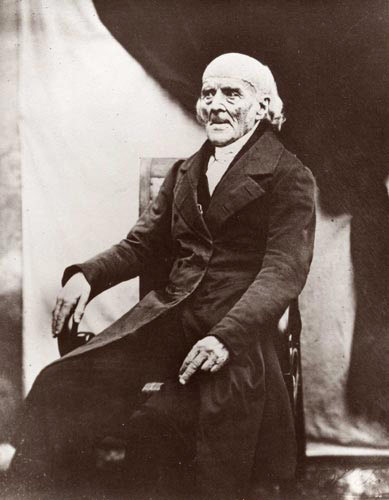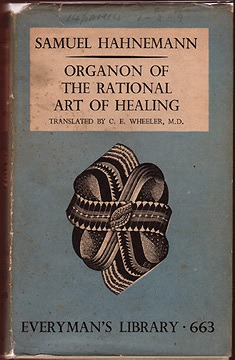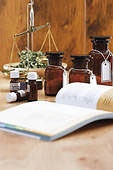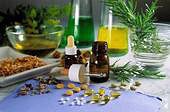How BrightHaven Discovered Homeopathy
An Introduction by BrightHaven Founder, Gail Pope
Homeopathy is flourishing precisely because it works! Everyone must choose one form of medicine over another and elect that which they see works best. For BrightHaven, homeopathy IS what works best, which is why we have developed a team of some of the finest classical veterinary homeopaths to care for our animals – – you can meet them here: https://www.brighthaven.org/about/our-vets/.
Two wonderful animals, Winston and Cindi, paved the way for BrightHaven’s journey into the world of homeopathy. The results shown by this healing application fired BrightHaven’s enthusiasm.
Back in the early 90s I had hesitantly begun to feed a raw meat-based diet to our cats and dogs and was amazed at the results. Around this time I was introduced to Pat McKay, a well-known expert in the fields of healthcare and nutrition.
Pat volunteered to make attempts to educate me a little more about the mysterious world of holistic medicine. I was to have my 3rd consult with her one bright sunny day when I realized that our dear old man Winston had developed a huge hematoma in his left ear.

Winston’s Condition
Winston’s ear was red, throbbing and hugely swollen, so I called Pat to reschedule, since it was clear to me that Winnie must have surgery. Pat, to my surprise, was unperturbed. She pronounced that not only would it be dangerous to put such an elderly dog under anesthesia, but that his problem could be treated homeopathically! I knew nothing about homeopathy and the information Pat gave me did nothing to encourage my belief. How on earth could THIS work?!
She wanted me to give a remedy which, as an original unprocessed substance, would have caused the same kind of problems that Winnie was already experiencing. The woman was clearly crazy! Pat suggested that since Winston’s problem was not life threatening I should try her suggestions and wait a couple of days before surgery. Hesitantly I agreed, and guess what? Winston never did need surgery!
His ear very shortly returned to normal size with no swelling or redness. I started to devour books on homeopathy, but found the science confusing, baffling and completely contradictory to my everyday world of veterinary medicine. Then one day came the very last push I needed.
Recovery from Acute Renal Failure of Elderly Persian Mix, Cindi
I was struggling to deal with the impending death of Cindi, a beloved elderly Persian mix, who had fought inflammatory bowel disease with drugs for such a long time that they had finally taken their toll on her system.

She was in acute renal failure and her last hours seemed to be approaching. Internationally known homeopath Dr. Christina Chambreau heard about Cindi and telephoned to offer her help. Politely and tearfully I declined, only to find that Christina was not to be deterred.
She firmly informed me that she, and not I, was the vet, and so I had nothing to lose. I cuddled Cindi, listened and answered many strange questions she had about Cindi. What on earth could she do by telephone? I was miserable, but followed her advice and purchased the prescribed remedy.
Sometimes we are granted miracles and my experience with Cindi was just such an event, sent to change our lives yet again and forever after! Needless to say, Cindi recovered from an acute situation that nearly always ends in death, and so began yet another chapter in our ever-changing world.
These days, when one of our animals is unwell, our first telephone call is to the homeopath. We ensure that all our animals have their own volunteer homeopath, dedicated to helping each and every one regain a balance for health. The results we have seen for over two decades are truly remarkable, both in chronic cases and acute instances. One only has to look at the overall ages and health records of the BrightHaven animal family to see that something special has been happening.
Our cats have most often lived into their late 20s, with Frazier into his middle 30s, and the BrightHaven dogs most often to their late teens and early 20s.
We still find the science remarkable and extraordinary. The more we learn, the more we realize there is to learn. We continue to find that homeopathy is both a gentle curative and a non-invasive form of medicine. I heartily recommend that you choose a professional veterinary homeopath to take care of your pet. We are honored to be working with the finest vets that the holistic veterinary world has to offer and here you will find the names of some of our favorite classical veterinary homeopaths.
The physician’s highest calling, his only calling, is to make sick people healthy–to heal, as it is termed. The highest ideal of therapy is to restore health rapidly, gently, permanently; to remove and destroy the whole disease in the shortest, surest, least harmful way, according to clearly comprehensible principles. –Samuel Hahnemann, Organon of Medicine, 1810
Homeopathy as a holistic modality
Frequently the word “homeopathic” is confused with “holistic”. The word “holistic” is an umbrella term that covers many types or modalities of natural medicine. Acupuncture, both Western and Chinese herbal medicine, acupressure, craniosacral therapy, Bowen therapy, flower essences, animal Reiki and animal communication, along with many more, are all forms of holistic healthcare, as is vitamin or nutritional therapy.
Homeopathy is one modality that is considered to be a complete holistic healing system, and is both scientific and systematic. It is considered that homeopathy, along with acupuncture, can achieve true healing rather than just the suppression or palliation of symptoms. It has been used in humans for about two hundred years and is only recently being more widely applied to animals, with whom it has been proven to accomplish excellent results.
How homeopathy works and the scientific development of an ancient system

Although formally conceived by Samuel Hahnemann, MD, a brilliant German physician who lived from 1755 to 1843, the roots of homeopathy go back to Hippocrates, Paracelsus, the Mayans, Chinese, Greeks, Indians (Asian & American) and Egyptians.
Hahnemann realized that drugs and surgery, while helpful in traumatic injuries, were unable to bring about true healing for anything else. He saw that drugs removed symptoms temporarily, but when they were discontinued, the symptoms usually returned, often stronger than before. Through careful and extensive experimentation, Dr. Hahnemann documented the principle of homeopathy, the law of similars or “like cures like.”
Hippocrates and other Greek physicians also observed that if a chronically ill person who had one disease was infected with a more severe disease that had similar symptoms, the chronic disease would disappear upon recovery from more acute, stronger disease. All older medicinal systems that have persisted through the ages share the recognition of an underlying energy component to the individual referred to most commonly as Prana, Chi or Spirit. There are also many other names known in healthcare systems throughout the globe that emphasize the importance of recognizing the energetic life force which brings about healing.
Homeopathy begins with the premise that each individual has an inner energetic principle (vital vorce) that is responsible for maintaining the health and wellbeing of that individual. When the vital force is disturbed through infection, trauma, vaccination, etc., it produces symptoms in an attempt to heal. It is these symptoms—physical, emotional and/or mental—which we call disease.
At BrightHaven we think of this in simple terminology. We think of a healthy body as being in balance—in a state of ease, and we see the unhealthy body as being the opposite, and in a state of dis-ease. The Organon, Hahnemann’s book explaining the principles and philosophy of homeopathic practice, is still the primary text for homeopathic students today.
 The basic principles of homeopathic practice:
The basic principles of homeopathic practice:
- Knowledge of disease: the sum total of all the symptoms, past and present, represents the underlying imbalance that needs to be corrected.
- Knowledge of medicines: homeopathic preparations of herbs, minerals and body substances are tested on humans, who report all changes occurring as a result of taking the homeopathic remedy.
- Ability to match the remedy to the individual in the right strength (potency), amount and frequency.
- Knowledge of obstacles to recovery: the major obstacles in animals include poor nutrition, over-vaccination, environmental toxins, other drugs, changes in lifestyle or people in their life, etc.
- Knowledge of the possible outcomes of treatment.
The basic tools used in homeopathic practice:
- Materia Medicas: books reporting the symptoms from the provings and from clinicians’ clinical experience.
- Repertories: indexes of the Materia Medicas. These are lists of symptoms with the remedies known to impact on those symptoms.
- Remedies: purchased from reliable pharmacies.
- Clinical judgment: from comprehensive veterinary training, study, courses, reading and learning, learning, learning.
The Vital Force
According to Einstein’s Theory of Relativity, everything in the universe is composed of matter (physical stuff) and energy. In reality, everything is composed almost entirely of energy (over 99%), with “everything” including living creatures. Homeopaths call the energy in our bodies the “vital force” which is responsible for health and healing. When this vital force is disturbed, it causes symptoms.
We can think of this structurally as observing atoms and the patterns that they take to create a cell that is fully functioning, and when not fully functioning, there is disease. Skin rashes, diarrhea, diabetes, cancer, etc. are the results of a disturbed vital force. Drugs and surgery only address the symptoms; there is no awareness in “conventional medicine” that the vital force even exists.
Since this underlying disturbance is not treated, health problems usually become chronic. The same symptoms may return over and over or they may change form, only to be diagnosed as something new because the disturbance remains. An example of this would be after years of cortisone therapy for itchy skin, many individuals get other “diseases” such as cancer or diabetes. The disturbance in the vital force not only progresses without any attempt to help it, but this damaging and toxic drug continually poisons the body. As a result, more serious problems arise.
How is the vital force healed?
Hahnemann was the first to combine the spirit-like principle and the principle of “like cures like”, and created a well-organized system of medicine capable of treating most ailments. Especially important, he developed these medicines to treat the underlying tendency to become ill. I wonder if Hahnemann believed he was combining a spirit principle with the system of homeopathy?
In our time, which boasts such enlightened and deep-thinking souls, does it have to be so impossible to conceive of a nonmaterial dynamic force when we see around us every day so many phenomena that cannot be explained in any other way?….. –Samuel Hahnemann
When the vital force is disturbed (through infection, trauma, vaccination, etc.), it produces symptoms as it makes attempts to heal. It is these symptoms –physical, emotional and/or mental – which we call disease.
How are homeopathic remedies chosen?
 Dr. Hahnemann found that the body couldn’t have two similar disturbances within it at the same time. Therefore, if a physician could introduce into the body a disturbance similar to but stronger than the one already there, the new disturbance would overwhelm the original one.
Dr. Hahnemann found that the body couldn’t have two similar disturbances within it at the same time. Therefore, if a physician could introduce into the body a disturbance similar to but stronger than the one already there, the new disturbance would overwhelm the original one.
The new one, being from the remedy, would then dissipate on its own, leaving the patient free of them both. Simply put, this means that to remove a disease from the body in its entirety, the physician must administer a remedy which is capable of producing the similar symptoms in a healthy individual.
Homeopathic remedies are made from herbs, animal products and minerals. Each one has been extensively investigated as to the symptoms it can produce and therefore treat. To find the correct one, the practitioner examines the patient as a whole, with all physical and mental symptoms, food and environmental preferences, and what aggravates and improves the condition.
This process, along with then choosing the correct remedy among hundreds, is an incredibly complicated task that requires many years of training and experience. When the correct remedy is given, acute conditions can begin to dissipate within minutes. Chronic conditions usually take longer to improve and may require several remedies given in a specific order.
How are homeopathic remedies made?
 Homeopathic medicines come from animal, mineral and plant sources. Over the past two hundred years, these substances have been individually tested (and proven) in healthy human volunteers to determine their properties and characteristics as medicines.
Homeopathic medicines come from animal, mineral and plant sources. Over the past two hundred years, these substances have been individually tested (and proven) in healthy human volunteers to determine their properties and characteristics as medicines.
Once the disturbance in the vital force is corrected with the right homeopathic remedies, the body heals itself. To prepare “potentized dynamic” or homeopathic remedies, substances such as plants, tissue and minerals must be subjected to a series of dilutions and succussions (vigorous shaking) after which they are manufactured into very small sugar pills containing the “essence” of the original substance. They may be diluted to such a great extent that there is none of the original substance remaining.
Paradoxically, the more a substance is diluted and succussed, the more potent these remedies become. There are different potencies available: X, C, M, LM, CM, all of which relate to how many times they were diluted and succussed. For example a remedy of the potency 30C would have been succussed 3,000 times. Potencies are chosen according to the severity of symptoms and the strength of the patient’s vital force.
What is the job of the practitioner?
The job of the practitioner is to carefully match the properties of the medicinal substance (remedy) to the symptom picture or dis-ease state of the patient according to the homeopathic Law of Similars–“like cures like.” Homeopathy does not offer treatments for dis-eases but has remedies for people with diseases.
How does the remedy work?
The remedy stimulates the patient’s vital force to produce symptoms similar to those of the patient’s disease, thus creating a “medicinal disease.” The medicinal disease displaces and extinguishes the patient’s natural disease so that s/he heals “from the inside out” in a holistic manner. In many cases, it is realistic to hope that the patient will be cured, that is, s/he becomes healthy, symptom free and requires no ongoing treatment, medicine or special handling (diets, bathing, etc.). The healing process can be very lengthy–from several months to even years, so patience is a requirement for the guardian, the animal companion and the practitioner.
What can homeopathy treat?
Any medical condition that we are accustomed to treating with the “ANTI-S” (anti-biotics, anti-inflammatories, anti-histamines, anti-depressants) can be treated with homeopathic remedies. This includes acute conditions such as parvo, snake bite, heat stroke and chronic conditions such as skin/flea allergies, bleeding disorders and arthritis.
Many surgical cases (e.g., tumors, abscesses) and behavioral cases (e.g., aggression, fears) can also be effectively treated. Treatment is accomplished in a very gentle, noninvasive manner by the administration of specially prepared homeopathic remedies. Remedies are dispensed as either small, sweet-tasting pellets or as liquid preparations to be given in small oral doses. Sometimes a single dose is sufficient to set the healing process in motion and sometimes repeated doses are needed. Re-dosing may be as often as daily or as infrequent as once every few months.
What are your responsibilities as the guardian of your animal companion?
Observation and recording: A few days after the remedy is given, changes will begin to occur in chronic cases. You will need to carefully observe and record all physical/behavioral symptoms, traits and especially changes (e.g., thirst, appetite, energy level, diarrhea). These observations are important in evaluating the response to treatment and in determining when to give the next dose or the next remedy. Aggravations are to be expected and should be carefully noted.
Avoiding other drugs, treatments:
Vaccines, drugs, surgeries and even insecticides (flea collars/baths) can interfere with the healing process, possibly making the disease incurable. Please call your veterinarian before using any of these therapies.
Nutrition, exercise and grooming:
Just as for humans, there is no substitute for a healthy lifestyle. One of the most powerful adjuncts to successful homeopathic treatment is good nutrition. A good diet provides the building blocks for the body on its pathway to good health.
The highest ideal of cure is the rapid, gentle, and permanent restoration of health…in the shortest, most reliable and most harmless way. –Samuel Hahnemann, MD (1755–1843), founder of homeopathy
Knowledge reduces fear and increases confidence, and conscious decision-making may minimize future regrets. We invite you to explore our caregiver resources (including animal hospice education and holistic healthcare education), online learning and publications to learn more. You may also wish to book a consultation with BrightHaven President and Founder Gail Pope.


